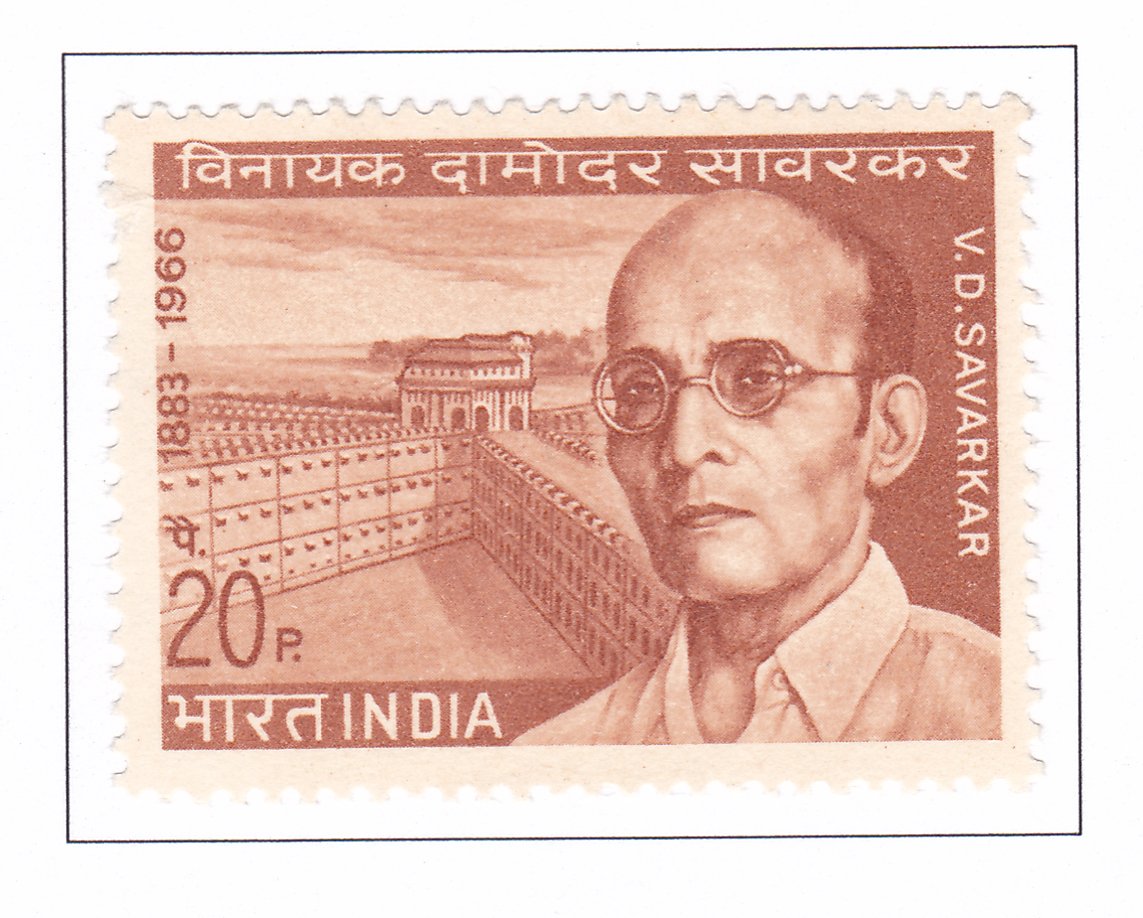Vinayak Damodar Savarkar

Technical Data
| Date of Issue | May 28, 1970 |
|---|---|
| Denomination | 20 nP |
| Quantity | 3,000,000 |
| Perforation | comb 13 |
| Printer | Security Printing Press, Nashik |
| Watermark | No Watermark |
| Colors | Orange brown |
| Catalog Codes |
Michel IN 500 Stamp Number IN 516 Yvert et Tellier IN 299 Stanley Gibbons IN 614 |
| Themes | Commemoration | Famous people | Men | Optical Instruments | Politicians |
Vinayak Damodar Savarkar’s life is a testament to resistance, strife, struggle, suffering, and sacrifice for India’s political, social, and economic emancipation. Born on May 28, 1883, in Bhagur near Nasik, Savarkar hailed from a family of Chitpavan Brahmins, renowned for producing notable revolutionaries like Nana Saheb and Lokmanya Tilak.
After completing his matriculation in Nasik, Savarkar pursued his education at Fergusson College in Poona. There, he found like-minded students committed to India’s freedom struggle. In 1904, despite still being an undergraduate, Savarkar convened a meeting and founded “Abhinav Bharat,” dedicated to achieving freedom from British rule, even if it meant resorting to arms.
Following his graduation in 1905, Savarkar pursued law studies in Bombay. In 1906, he went to London on a scholarship recommended by Lokmanya Tilak and was admitted to Gray’s Inn. In London, he established the “Free India Society” as a recruitment ground for “Abhinav Bharat,” attracting Indian nationalists, including Madame Cama.
The repression in India spurred members of “Abhinav Bharat” into action, leading to the assassination of Cuzon Wyllie by Madan Lal Dhingra in 1909. Savarkar came under suspicion, and despite passing his final examination, Gray’s Inn refused to confer his degree unless he pledged to stay away from politics, a condition he rejected.
While in London, Savarkar wrote “The First War of Independence” about the 1857 revolution, which was confiscated by the British government before publication. In 1910, he was arrested in connection with the Nasik Conspiracy case. During his extradition to India, Savarkar attempted a daring escape by jumping into the sea off Marseilles but was apprehended by British authorities.
Savarkar was tried for sedition in Bombay in 1910 and sentenced to double transportation for life, resulting in about 50 years of rigorous imprisonment. He spent 12 years in the Cellular Jail in the Andamans, enduring harsh conditions without losing his spirit or determination for freedom.
Released to Tantnagiri in 1924 until 1937, Savarkar joined the Hindu Mahasabha for seven years, tirelessly advocating for the removal of untouchability. He built the “Patit-Pawan Mandir” and appointed a Harijan priest, demonstrating his commitment to social reform.
During discussions with the British government, Savarkar emphasized the importance of keeping India united. He rejoiced when India achieved independence in 1947.
In 1951, he dissolved the revolutionary organization “Abhinav Bharat” and dedicated himself to the ideals of the Hindu Mahasabha until his passing on February 26, 1966, at the age of 83.
Veer Savarkar’s memory remains cherished by his countrymen, and his legacy places him among the great men of his generation. The P.& T. Department commemorates his contributions with a special commemorative stamp, honoring his enduring impact on India’s struggle for freedom.
